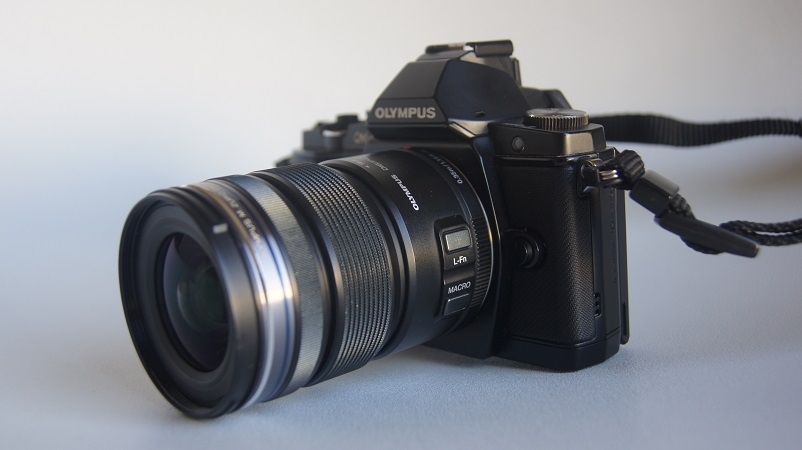At first glance, you could be excused in thinking the Olympus M5 is an old camera. Funny thing, you would be partially correct – the current model is a technology and stylistic upgrade from an Olympus camera from 1973. While it features a timeless design, it also boasts modern touches like a Magnesium-alloy body that makes it lightweight, and weather-sealing that makes it dust- and splash-proof.
Handling
If you have ever handled an Olympus camera, you will know that it doesn’t conform to the usual placement of buttons and switches. As an example, most cameras have power buttons that are situated on the top of the camera body, next to the shutter button. On the E-M5 and its related models, the power button is located way down on the bottom edge of the backplate. It also does things a bit differently for the mode selection wheel, placing it on the left-hand side of the body. While it’s not a huge problem, placing it there does make it a bit difficult to quickly swap between modes.
The area where the selection wheel should have been is occupied by a generous manual wheel and the shutter button – which is a bit bigger than most. For general operation and everyday handling, the E-M5 provides an uncomplicated experience, and you should be able to comfortably navigate yourself around the camera in no time. The only drawback is that some of the controls are a little bit small.
The biggest surprise is just how small the E-M5 feels in the hand. If you’re used to a modern SLR it’s a very ephemeral-feeling camera – but don’t let that fool you into thinking it’s underpowered.
Image quality
Thanks to the M5’s 4/3’’ Live MOS sensor and JPEG engine, it produces really good quality images. Olympus has been doing mirrorless longer than anyone, and it shows in the final pics. It even performs rather well in even low light and is capable of pushing the ISO to 25 600 and staying usable to 1 600 and beyond. To capture fast-moving objects, it can shoot up to 9 frames per second, or 4.2 frames per second if the continuous focus is engaged.
Performance
For those with shaky fingers, Olympus throws in a 5-axis stabilisation system to compensate for when things get a bit bumpy. That is a very good feature to have on any digital camera, and luckily most have an image stabilisation feature of some kind. But the E-M5’s is kind of special – it compensates for pitch, yaw, roll, and horizontal and vertical translational movements. Not content with stopping there, Olympus added what it calls the “World’s Fastest Autofocus Speed”. The model makes use of Olympus’ FAST-AF technology, which has 35 autofocus points and 3D autofocus tracking. To you and me, the information being sent from the imaging sensor to the TruePic VI processor is delivered at a rate of 240fps.
[symple_box style=”boxinfo”]
Key features:
- Price: Approx. R6 000
- Integrated 1.44 megapixel Digital
- Viewfinder
- 4/3’’ Live MOS sensor
- 16.1 Megapixels
- Magnesium alloy body
- 3.0 inch Tiltable OLED monitor
[/symple_box]


